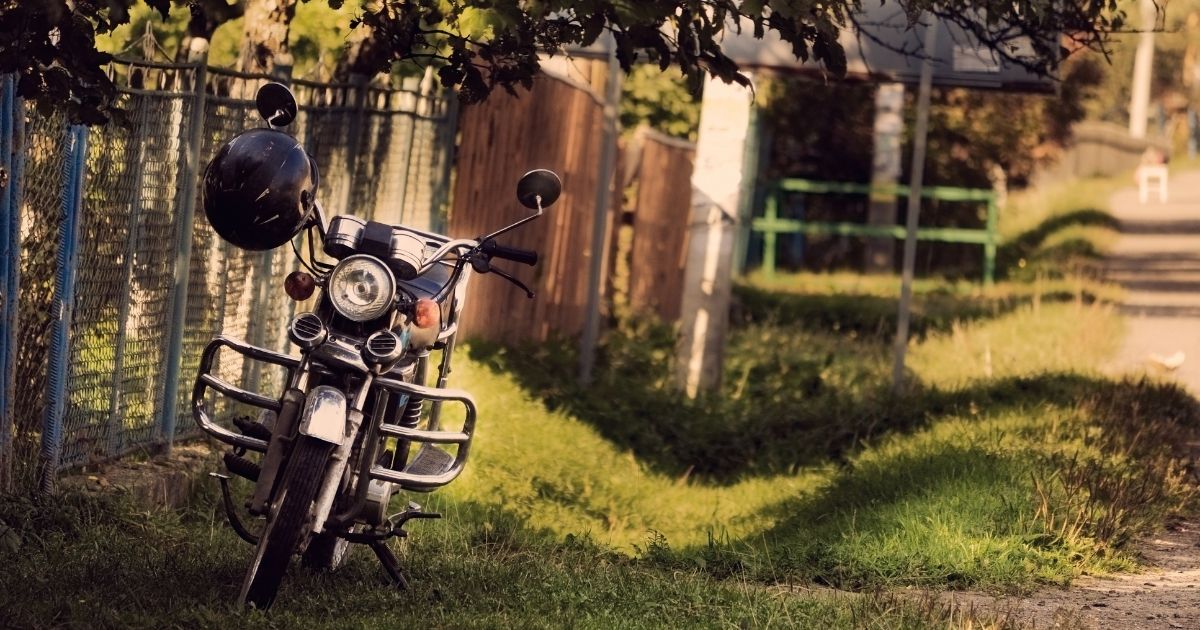Motorcycle riding is an outdoor adventure where the wind whips around the cyclist and any rider aboard. Cooler temperatures can be time to put on the leathers. Autumn’s changing leaves are a canvass of colors, and the feeling of independence abounds. Motorcycles can be and often pose risks to their riders for a variety of reasons. Therefore, how can you safely ride a motorcycle in the fall?
Motorcycle safe driving tips in the fall are a little different than at other times of the year.
General Safe Motorcycle Riding Suggestions
Whatever the season of the year, a motorcycle is a vehicle of considerable power and maneuverability for its size and weight. Motorcycle operation has safety protocols at all times.
The operating features of your motorcycle require routine maintenance like any vehicle. Check the brakes, the engine’s compression, the oil, the clutch, and the lights, including the brake and turn signal lights. Do a walk-around before taking it on the road, looking for tire pressure changes or hanging pipes or wires. If anything looks awry, check further. Make sure the seat is comfortable. Do not forget the mirrors.
Before you get on the bike, wear sensible and weather-appropriate clothes and your safety helmet and visor. Footwear should be sturdy.
It is also important to note that driving a motorcycle in the fall presents its own set of challenges.
Variables for Riding a Motorcycle in the Fall
Autumn variables can affect both the motorcycle and the rider.
The motorcycle. Tires can lose air pressure overnight when nighttime temperatures fall. Even if you rode your motorcycle last night without trouble, in the early morning chill the tires could be at the wrong pressures. It is conceivable that throttle linkage problems can occur. Freezing overnight temperatures can also affect fluids for the bike.
Your bike’s battery may lose charge, so remember to use a battery tender.
Take a close look at the muffler pipes for any road debris or leaves that may interfere with its function.
The cyclist. Morning dew or low fog can dampen roads and cause slippery conditions. Fallen leaves can freeze at night and become slippery. Also, there is the black ice to worry about where a dark road surface can hide a layer of ice.
As October turns to November, recognize frost conditions that are hazardous.
Clock changes and the loss of a minute of daylight each day result in sun glare. The sun is at a different angle to the earth, concentrating brightness in a longer but narrower corridor. In addition to glare directly in front of the cyclist, the glare can reflect off sideview mirrors.
The fall-behind clock resetting can mean fatigue for all drivers. This includes cyclists.
Although a motorcycle has fewer blind spots than other vehicles, the profile of the motorcycle and its maneuverability can make it harder for other drivers to see it. Their blind spots can easily hide a motorcycle.
Fall is also the season for deer to mate and feed. Take every precaution and look for deer as you ride.
Safe Motorcycle Operation is a Priority in Any Season
Motorcyclists and riders have fewer safety provisions than other vehicles on the road. There are no airbags or seat belts or crash zones. Cyclists must ride defensively and anticipate other drivers and think ahead. Even the most cautious cyclist can lose traction with the road or spin out.
South Jersey Personal Injury Lawyers at the D’Amato Law Firm Represent Clients Hurt in a Motorcycle Accident
Accidents can happen in the autumn even for the safest motorcyclist. The South Jersey personal injury lawyers at the D’Amato Law Firm can help victims of a motorcycle accident. Our experienced and compassionate legal team will assist you to determine fault and seek compensation. Call us today at 609-926-3300 or contact us online for a free consultation. With an office in Egg Harbor Township, New Jersey, we assist accident victims in Atlantic City, Linwood, Galloway Township, Cape May, Vineland, Millville, Bridgeton, Ocean City, Woodbury, and across South Jersey.


